The EU is ready with the framework of post crisis economic governance
Ralitsa Kovacheva, March 30, 2011
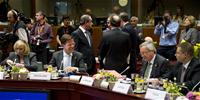 At the spring European Council on 24 and 25 March, the EU leaders have finalised the framework of the comprehensive response to the debt crisis in the euro area (according to one of the favourite Brussels cliches) by endorsing its basic elements. Now the biggest challenge is this complex structure of mechanisms and responsibilities to start working effectively and in a synchronized manner. Whether this is possible will become clear in the next few years. At this stage we can only summarises the main pillars of the so-called
At the spring European Council on 24 and 25 March, the EU leaders have finalised the framework of the comprehensive response to the debt crisis in the euro area (according to one of the favourite Brussels cliches) by endorsing its basic elements. Now the biggest challenge is this complex structure of mechanisms and responsibilities to start working effectively and in a synchronized manner. Whether this is possible will become clear in the next few years. At this stage we can only summarises the main pillars of the so-called
EU economic governance
The package of legislative proposals of the European Commission on the enhanced economic governance of the EU includes proposals for reform of the Stability and Growth Pact, with the possibility of early sanctions and special attention to debt, as well as surveillance of the macroeconomic imbalances, particularly with regard to the euro area. The package is to be approved by the European Parliament before the summer break.
The Euro + Pact
The leaders endorsed the creation of the Euro + Pact, which except the euro area 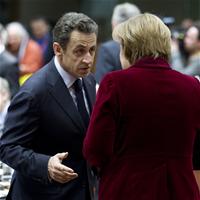 countries includes also Bulgaria, Denmark, Latvia, Lithuania, Poland and Romania (United Kingdom, Sweden, Hungary and Czech Republic haven't joined the Pact). Its purpose is to strengthen political pressure on leader's level in order to achieve more convergence of economic policies in the euro area (and non-euro area members) and to increase competitiveness. It is not accidentally that the Pact focuses on policies that are a national prerogative, but are vital for competitiveness – in these areas the institutional pressure from Brussels is minimal because of the absence of common policies, so convergence will rely on political control and peer pressure.
countries includes also Bulgaria, Denmark, Latvia, Lithuania, Poland and Romania (United Kingdom, Sweden, Hungary and Czech Republic haven't joined the Pact). Its purpose is to strengthen political pressure on leader's level in order to achieve more convergence of economic policies in the euro area (and non-euro area members) and to increase competitiveness. It is not accidentally that the Pact focuses on policies that are a national prerogative, but are vital for competitiveness – in these areas the institutional pressure from Brussels is minimal because of the absence of common policies, so convergence will rely on political control and peer pressure.
The Pact will pursue four main objectives - boosting competitiveness, employment, sustainability of public finances and financial sector stability. At the heads of state level common targets will be defined, which member states will pursue in accordance with their national challenges. “Each year, concrete national commitments will be undertaken by each Head of State or Government. In doing so, Member States will take into account best practices and benchmark against the best performers, within Europe and vis-à-vis other strategic partners.”
A political monitoring of the implementation of commitments will be realised by the leaders of the Pact’s member states on an yearly basis, based on a report of the Commission. To this end, concrete indicators will be set in terms of competitiveness, employment, fiscal sustainability and financial stability. “Countries facing major challenges in any of these areas will be identified and will have to commit to addressing these challenges in a given timeframe.” Each country commits to consult with its partners before implementing major economic reforms that may affect others. Details on the measures envisaged in the Euro +Pact can be found here.
Restoring health of the banking sector
Regarding the bank stress tests which have to be conducted by June 2011, European leaders underline “the importance of the peer review process to be conducted in close cooperation with national supervisors, the European Systemic Risk Board, the Commission and the European Central Bank in order to increase the consistency and quality of the results. A high level of disclosure for banks will be ensured, including on sovereign debt holdings”. Ahead of the publication of the results, Member States must be prepared with “specific and ambitious strategies for the restructuring of vulnerable institutions”.
The European Stability Mechanism
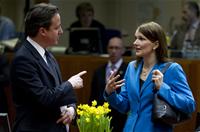 The European Council confirmed the creation of the European Stability Mechanism (ESM), agreed by the eurozone leaders on March 11. The treaty establishing the permanent rescue fund for the euro area, as well as the amendments to the temporary fund EFSF will be finalised by the end of June so the national procedures could start. As euinside repeatedly wrote, the ESM will take effect from mid 2013, it will provide funding to troubled euro area countries „if indispensable to safeguard the stability of the euro area as a whole” and under strict conditionality. The ESM will be able to buy sovereign debt of eurozone countries, but only on the primary markets and, again, under the same strict conditionality.
The European Council confirmed the creation of the European Stability Mechanism (ESM), agreed by the eurozone leaders on March 11. The treaty establishing the permanent rescue fund for the euro area, as well as the amendments to the temporary fund EFSF will be finalised by the end of June so the national procedures could start. As euinside repeatedly wrote, the ESM will take effect from mid 2013, it will provide funding to troubled euro area countries „if indispensable to safeguard the stability of the euro area as a whole” and under strict conditionality. The ESM will be able to buy sovereign debt of eurozone countries, but only on the primary markets and, again, under the same strict conditionality.
In all cases the first condition will be a debt sustainability analysis, made by the Commission and the ECB. “If, on the basis of a sustainability analysis, it is concluded that a macro-economic programme cannot realistically restore the public debt to a sustainable path, the beneficiary Member State will be required to engage in active negotiations in good faith with its creditors to secure their direct involvement in restoring debt sustainability. The granting of the financial assistance will be contingent on the Member State having a credible plan and demonstrating
sufficient commitment to ensure adequate and proportionate private sector involvement.”
In order to facilitate negotiations with private creditors, all new government bonds issued by the euro area from July 2013 onwards will include Collective Action Clauses (CACs). The EU leaders emphasize, however, that this “will not imply a higher probability of default or of debt restructuring relating to that bond.” The ESM itself will have the preferred creditor status, so its loans will be serviced with priority.
The ESM will be managed by a Board of Governors, consisting of the Ministers of Finance of the euro-area Member States as voting members. The European Commissioner for Economic and Monetary Affairs and the President of the ECB will attend as observers. Additionally there will be a Board of Directors, as “voting weights within the Board of Governors and the Board of Directors will be proportional to the Member States’ respective subscriptions to the capital of the ESM. A qualified majority is defined as 80 percent of the votes.”
With regard to countries outside the euro area, according to the conclusions of the European Council, they may participate in the operations of the ESM on an ad hoc basis, as they will be presented at the relevant meetings of the governing bodies,“will have access to all relevant information in a timely manner and be appropriately consulted”.
The ESM will have a capital of 700 billion euro, of which 80 billion in the form of paid-in capital provided by Member States. The money will be paid in five equal installments from July 2013. In addition, the fund will have a capital of 620 billion euro, guaranteed by Member States. The contribution of each country is determined by an ECB key which takes into account countries' shares in the ECB's capital, GDP and population.
In the first 12 years in the operation of the ESM countries with GDP per capita of less than 75% of EU average will pay reduced contributions. “In the event that paid-in capital exceeds the level required to maintain the lending capacity of the ESM, the Board of Directors can decide, by simple majority to distribute a dividend to the euro-area Member States based on the contribution key.”
The process of decision making is quite complex. Firstly, when an assistance is requested, the Eurogroup should inform the Council and ask the Commission, together with the ECB to assess the risk to stability of the eurozone as a whole and debt sustainability of the country concerned. Again, the Commission, together with the ECB and the IMF, will be responsible to negotiate the macro-economic adjustment programme with the Member State concerned, which must be approved by the Council. The next step is the Board of Governors of the ESM to approve the financial assistance agreement. The Commission, together with the IMF and the ECB, will monitor compliance with the programme and will report to the Council and to the Board of Directors of the ESM. The Commission and the Council will regularly inform the European Parliament for the establishment and operations of the Mechanism.
Is there a pilot on board?
This complicated toolbox is a result of the attempts to combine the “community approach” (the leading role of European institutions in decision making process) with the will of member states, notably Germany and France, which literally topped the euro area in recent months. It is also a result of many compromises and backroom arrangements which, on the one hand, aim preserving the status quo and reflect the interests of individual member countries, but on the other - further complicate the already complex relationship between EU institutions and decision making processes.
One thing is certain at this stage – the European priorities are becoming  increasingly a hostage to internal political interests of individual member states. The EU leaders, for example, delayed the decision on the changes in the temporary rescue fund (EFSF), because of the elections in Finland, despite growing concerns that Portugal may soon ask for financial assistance. Another example is the pressure of the eurozone countries, especially France, over Ireland to raise its corporate tax rate in order to get lower interest rates to its rescue loan. The growing internal pressure on German Chancellor Angela Merkel will be increasingly felt, given her Christian Democratic Union (CDU) lost important state elections for the second time this year.
increasingly a hostage to internal political interests of individual member states. The EU leaders, for example, delayed the decision on the changes in the temporary rescue fund (EFSF), because of the elections in Finland, despite growing concerns that Portugal may soon ask for financial assistance. Another example is the pressure of the eurozone countries, especially France, over Ireland to raise its corporate tax rate in order to get lower interest rates to its rescue loan. The growing internal pressure on German Chancellor Angela Merkel will be increasingly felt, given her Christian Democratic Union (CDU) lost important state elections for the second time this year.
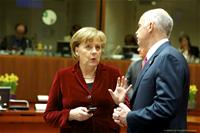 Ultimately, this is the result of the "one-legged" Europe, which has been for years only Europe of the institutions, but not of the citizens. This is the reason why Germans don’t understand the solidarity, which they are expected to express towards the Greeks. Neither the Greeks do understand why they don’t deserve it, but receive it. The Bulgarians themselves are not interested at all. And it will be this way as long as the politicians keep to balance between interests and principles, rather than try to unite them.
Ultimately, this is the result of the "one-legged" Europe, which has been for years only Europe of the institutions, but not of the citizens. This is the reason why Germans don’t understand the solidarity, which they are expected to express towards the Greeks. Neither the Greeks do understand why they don’t deserve it, but receive it. The Bulgarians themselves are not interested at all. And it will be this way as long as the politicians keep to balance between interests and principles, rather than try to unite them.
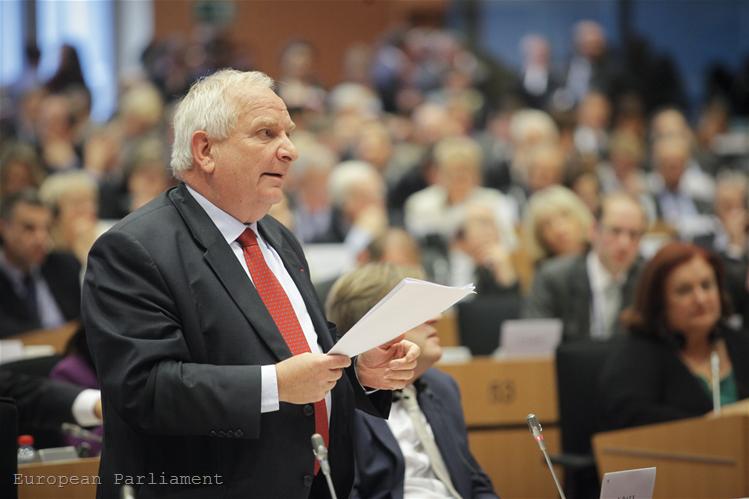 | © European Parliament
| © European Parliament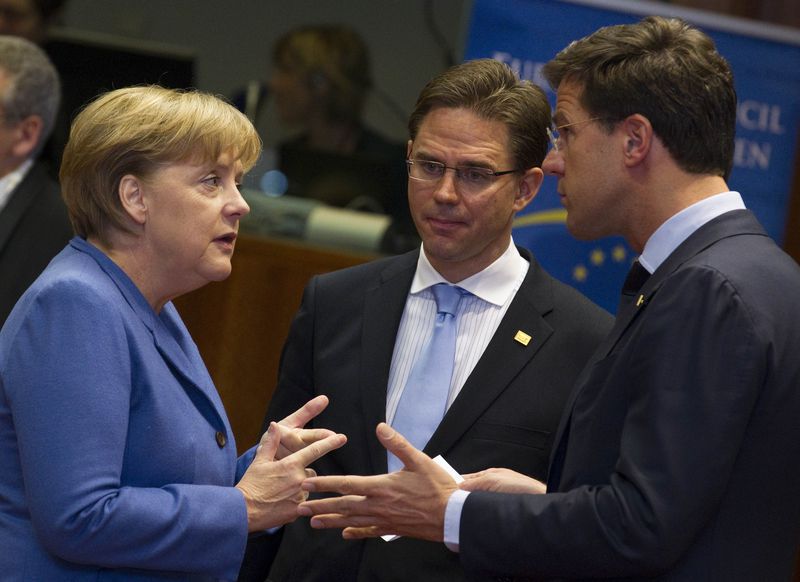 | © The Council of the European Union
| © The Council of the European Union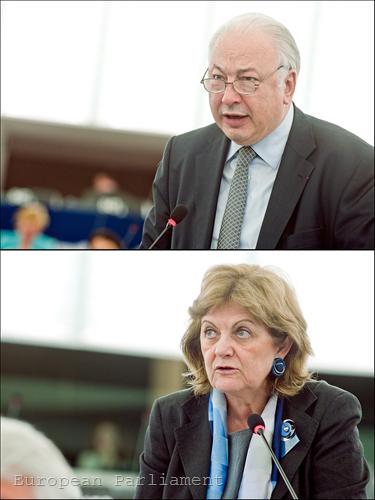 | © European Parliament
| © European Parliament | © Ralitsa Kovacheva | www.euinside.eu
| © Ralitsa Kovacheva | www.euinside.eu